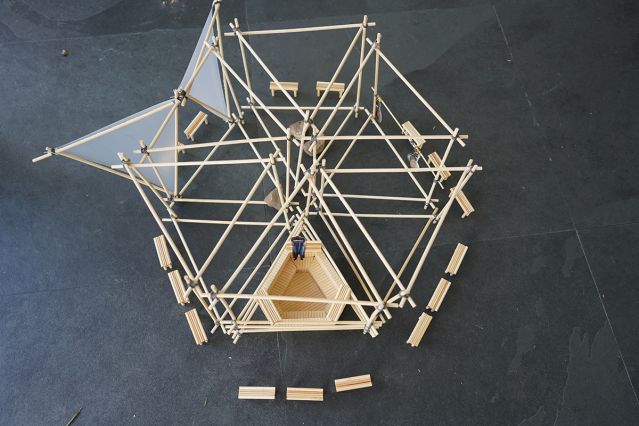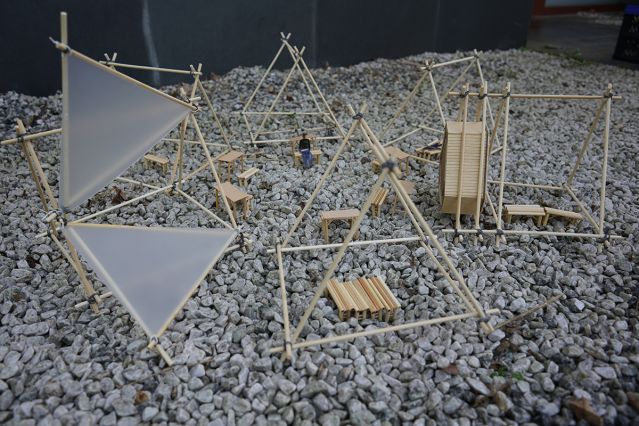Eine Oper einfach mal andersherum aufbauen - Deutsche Oper Berlin
Making an opera back to front
Usually, work on an opera begins with the text, then the music is created, then come the direction and stage design. In Barbara Ehnes' and Karla Max Aschenbrenner's production, however, all this is reversed. That is what makes it so exciting.
The first step in the production process is always the set design. And that’s long before rehearsals begin. Obviously the music has often been written beforehand or there may be a libretto or an idea being developed. But when designer Barbara Ehnes gets working on a set, she’s always the first person to start fleshing out that idea. She creates the space which others are going to use. The directorial work often doesn’t kick in until she’s finished designing the set.
»It’s an intense time for both people,« she says. »Just not at the same time. It’s not unusual for set designer and director to team up for years, sometimes even decades – for the sheer joy of knowing someone who can build precisely those realms that another person can maybe only sense. Barbara Ehnes collaborates regularly with director Stefan Pucher, just as Anna Viebrock works with Christoph Marthaler or Bettina Meyer works with Barbara Frey. It is rare for a set designer to double as director – as Barbara Ehnes is about to do at the Deutsche Oper Berlin – but for her there is a logic to it. »Designing a set means thinking through the piece from beginning to end,« she says. »If I’m directing the thing too, it gives me the added scope to stage the work exactly how I want it.«
In that respect the musical-theatre production that Barbara Ehnes is developing for the Tischlerei with Karla Max Aschenbrenner and composers Patrick Frank and Andreas Eduardo Frank is a gift in the sense that it does not yet exist on the page: no score, no text, no dramaturgy or stage set. What they do have is the notion that it’s going to be about capitalism, the all-pervading machine without which none of us can any longer picture our lives – although so much depends on that small measure of imagination. All we need now is an image of how that life might look.


Models of the sustainable stage set, inspired by Japanese masters and designed by Barbara Ehnes for her capitalism-critical work. At centre: a person surrounded by bamboo stems knotted together with ropes © private
Barbara Ehnes has worked with a wide spectrum of materials in her set designs. They range from giant video screens to a mesh of fungi that had to be kept fed with a nutrient solution and could be composted at the end of the performance. This will be her first time working with bamboo, a material that first fascinated her on location in Tokyo three years ago, when she was introduced to the skills of a »rope master«, a cordmaker who manufactures robust but dismantlable structures using bamboo stems and string. Her stage for the piece on capitalism is fringed by six tentlike arrangements of bamboo poles, reminiscent of houses around a village marketplace. These six structures can also be brought together to form a hexagon, like a honeycomb. Village and honeycomb – living units for sustainable organisms. The entire construction is held together by ropes and cords, enabling it to adapt to changes in setting, whereas capitalism works the other way around. In the case of this production, the settings that are hosting the production vary wildly, ranging from the Muffathalle in Munich to the Theater Basel and the Tischlerei. Ideas swirl around and the work is in search of a title, yet once again it all began with a stage set.
Text: Marcus Jauer. The journalist contributes features and essays to DIE ZEIT and Süddeutsche Zeitung magazine and co-authored the sustainability bestseller by Maja Göpel





